by Dick Ruzzin –
Nuccio Bertone
A car design is rarely done completely by one person. He or she might have artistic control but who they work for, the client and others that will execute the design, will have influence and suggestions when problems arise. There always are problems of function, manufacturing, etc.
Stile Bertone had a contemporary and complete design staff when I worked with them in the mid-nineties. They were very skillful as artists and designers. They crafted full size models in clay as well as plaster which was the medium they used the most. It was amazing to watch them work.
The level of artistic quality that I experienced when I was there was extremely high, as good as anywhere in the design industry around the world. Add that to the fact that Stile Bertone was surrounded by a 2000 year old Italian aesthetic culture that permeated everything in Italy and you can understand why the results were so highly received.
Nuccio Bertone was not formally trained as a designer but he grew up with design and style from the time he was a baby. He loved design and told me that it was the most important thing in his professional life, more than once. We got along well. When I left to return to the United States after my last meeting at Stile Bertone he was ill so I did not see him to say goodby.
A few days later I received a signed letter from him that I treasure. I do so not only because he was a great designer but also because he said something in it about our very successful time working together and how much he enjoyed his association with me and the other Opel designers.
I have heard some say that Nuccio Bertone was not a designer but that he knew how to choose design talent. That is true but he not only knew how to choose design talent he knew how to nurture and mentor it to the benefit of many. Believe me when I say that his design influence is what made the many beautiful and elegant vehicles designed at Stile Bertone as successful as they were. That combined with one of the greatest car design talents ever, Georgetto Giugiaro, resulted in many many beautiful Italian cars.
His respect and love for design and the cars that were done under him were shown to me the second time that we met. He showed his collection to me and asked me what I thought. When I answered I saw that he had tears in his dark eyes.
Lamborghini Miura vs De Tomaso Mangusta Design
Recently I have been thinking about the Miura compared to the Mangusta. Each is considered as better than the other by many. I own a Mangusta and have studied it for almost fifty years.
Each car is elegant and sporty. Each is also dramatic dimensionally so you could call them aesthetically equal. However, each car has a prominent life that has evolved as time has gone on. Compared to the Mangusta the Miura is starting to show more age, I can explain why I think this.
The Miura is a great looking car with a wonderful and skillfully executed form language as seen on many Giugiaro design solutions. It is reflective of it’s day. The Miura’s real strength is it’s proportion. The Mangusta design and especially it’s form language, was like nothing else when introduced and it pointed to the future. It was imitated by the entire global auto industry at the time. The Miura look is set in the time that it was created, but the Mangusta’s sheer surfaces and subtle curves enhanced by sharp peaks point to the future.
It was designed in 1966 but so imitated for years to come that it now looks significantly newer than the Miura due to its purity. Add that to the strong aesthetic influence that it had on generations of car designers and it must be given the nod as the most significant design of the two. It clearly changed the design direction of the global auto industry at the time. As great looking as the Miura is it did not influence car design‘s future. That is very hard to do.
Let us know what you think in the Comments.
THE AUTHOR: Dick Ruzzin, Mangusta 8MA670, has spent much of his life designing cars for General Motors. During his career he worked on over 140 car design projects as creative designer, studio head, and Director of Design for GM Europe, in Germany, and Chevrolet, in the United States. His latest book Designing Dreams is available here.

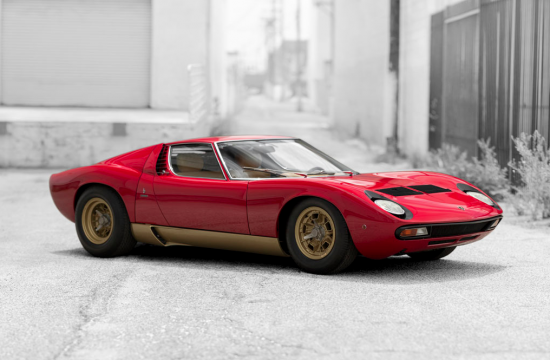
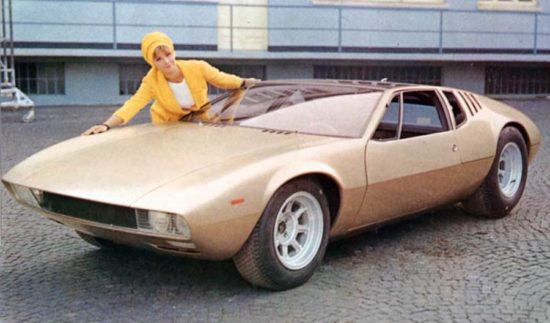
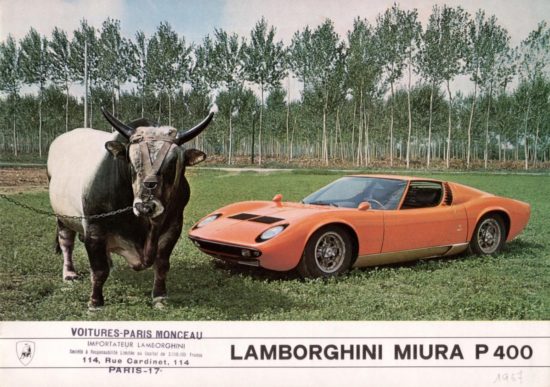
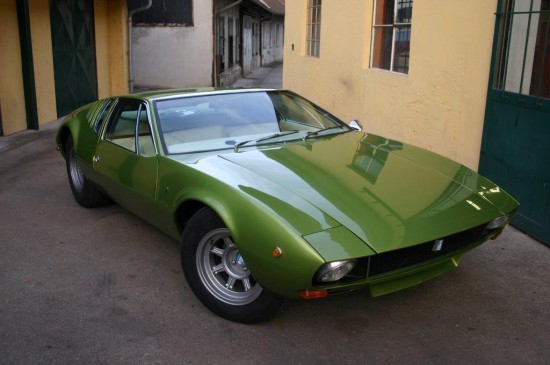
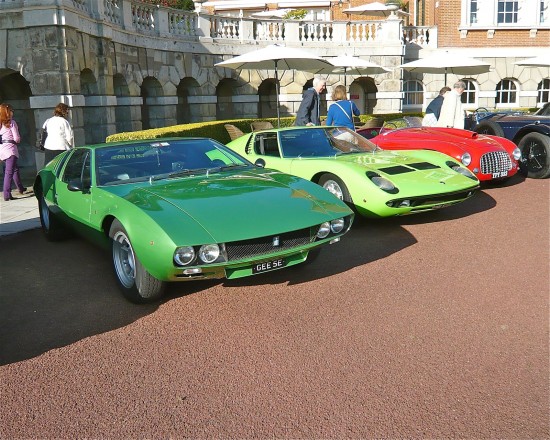
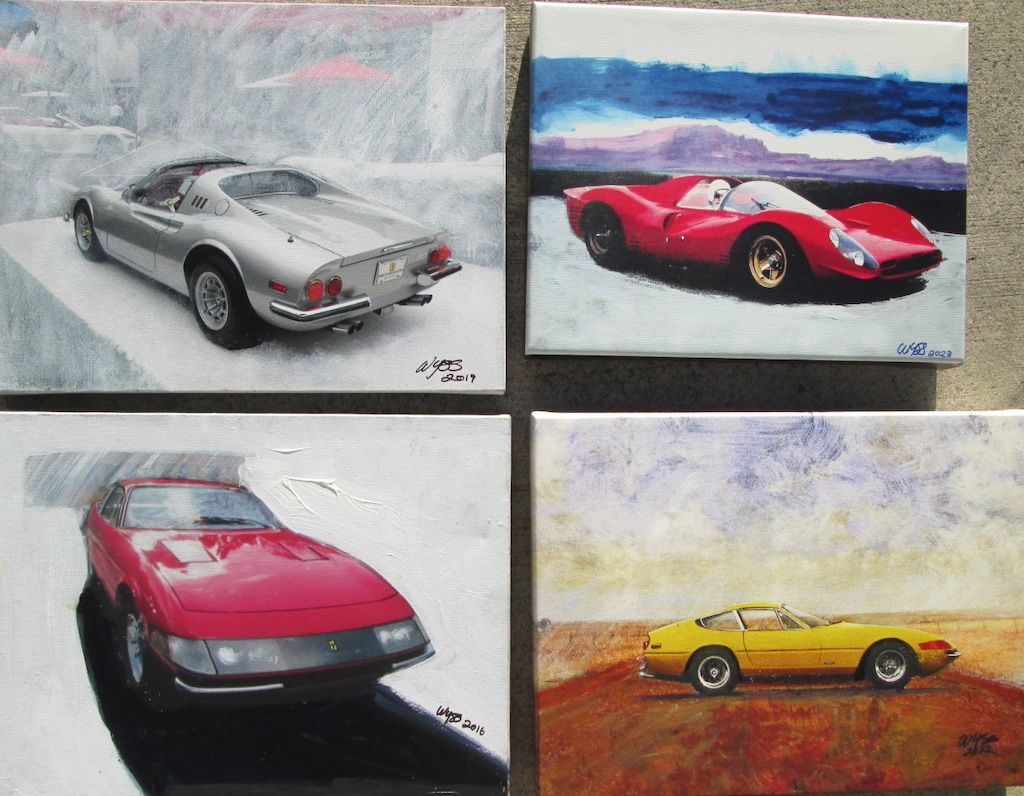

Like trying to compare Sophia Loren and Gina Lollobrigita.
Yes, but it is fun to think about it.
You are right on target the ‘purity’ makes it age so well.
I owned one of the first into the US.
On my second drive, in damp weather, I spun it (at least two rotations), The Mangusta is and was forgiven.
As an Architect I respect and push for purity.
I just saw this article, wish I’d read it sooner because I doubt this message will get read. Curious if JW Wood ever lived in College Station, Texas and drove a blue 308 GT4…
The Miura is considered the first “supercar”, with its mid-mounted transverse V12 engine. The auto world is divided into two sections, what came before the Miura and what came after the Miura, and what came after the Miura can be considered improved, better, phenomenal, super, fantastical, the cream of the crop, peachy keen, but the Miura will always be FIRST.
Glenn in Brooklyn, NY.
Three months for a masterpiece !
This drawing of the Miura was finally produced by Marcello Gandini, who created the first of a long series of masterpieces for Bertone for the Geneva Motor Show in March 1966. Only three months passed between the first sketch and the prototype[2]. Marcello Gandini worked almost alone on the Miura, assisted by three industrial designers[3].
Fabien , in Poitiers.
FRANCE
In a Gandini interview that appeared in the London Auto tabloid shortly after the Miura came out, he told the writer that; “Giugiaro left a set of lines and the car just fell together”. It was the first car that he had ever designed. It is absolutely amazing that a beginner would do such a sensational car. The theme of the Miura comes from the previous car that had been done by Giugiaro. The body side is almost exactly the same, only configured for a mid-engine car, rather than a front engine car.
The front of the car also has a strong relationship to previous cars done by Giugiaro. The design was clearly evolutionary based on past Bertoni design expressions. The staff at that Beetone had worked with Giugiaro for eight years and knew exactly what he wanted when faced with a question. The result is that the execution of the car looks like it was done by Giugiaro. This is called the form language, that any professional car designer will tell you is clearly from Giugiarro’s history. So, he left a set of lines, and the execution of the car looks like his. Gandini’s role was to put it together, which he did however, after Gandini left for vacatiion, Nuccio was unhappy with it and changed it.
That does not take anything away from many achievements made by Gandini. The next car, he did a special Jaguar for an Opel dealer from Rome turned out to be a disaster. He was still inexperienced.
But, he was talented and a quick learner and followed with some sensational concepts like the Carabo and many others. However, he did not have the broad ability to do production cars successfully. By production, I don’t mean low volume cars. He did many sensational cars, but, Nuccio Bertone told that when the Miuiral was finished, he was very unhappy with it and changed it. Nuccio Bertone told me that story directly.
Also, it is clear that Giugiaro left after everything was put in place to create the Miura. He certainly would not leave a project like that in the hands of a beginner when he had the chance to have a great influence over it. The fact that Giuugiaro was never mentioned as one of the creators of the car caused a break between to Giugiaro and Bertone..
In another interview,Giuigiairo said that when he left Bertone, he felt that he should not take anything with him and consequently, he created a whole new form language, the first expression was the Fidia sedan. That led to the Mangusta that was designed at home on his kitchen table. That form language spread around the world when the Mangusta was seen. He took the design to GHIA and when De Tomaso bought the company he put it together with his chassis that had been engineered by he and Carrol Shelby. The story, with much more detail is in my book, Bella Mangusta, the Italian art and design of the De Tomaso Mangusta.
I agree that the Mangusta is the more pure design that has stood the test of time and still has basic appeal. The Miura had some gimmicks (the louvers on rear window, “eyebrows on the flip up headlamps. Side view it’s still the ‘Goose that has the more macho look. But too bad the Goose was not sorted out and had quirky handling. The change to flip-up headlamps looks dated today. I think Giugiaro got a greater career boost than Gandini out of it.
Remember that it was Giugiaro who first penned what became the Miura. Gandini took over after Giorgetto left Bertone to found his own Ital Design firm. But it was Gandini’s tweaking made it a reality! Giugiaro drew inspiration from the contemporary Ford GT 40, but really cleaned it up with those svelte lines. Of course, the Ford was a race car, designed without regard to beauty. It only needed to be fast!
It is a shame that Bertone hasn’t received the same notoriety as Pininfarina (because of Ferrari). In addition to Giugiaro and Gandini,, Bertone had several great designers, including Franco Scalgione (who, according to Paula Reisner of Intermeccanica, was ambidextrous and drew the left side of the car with his left hand, and the right with his right!).
Great designers. Great men!
The Miura and the Mangusta were both mid engine cars like the Ford GT. Consequently their proportions were very similar. The Ford GT and the Mangusta had longitudinal engine placement. The Miura was transverse.
It is the proportion of the two cars that is similar, this was not caused by design inspiration. This is often a mistake that people make, confusing proportion with design. The Ford GT was highly developed aerodynamically as a race car. I doubt very much if either the Miura or the Mangusta ever saw a wind tunnel.
I do an aerodynamic analysis of the Mangusta in my book, which was sent to the director of the GM windtunnel, who I worked with for several years. He endorsed it.